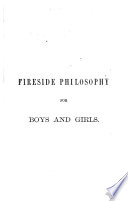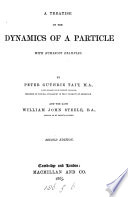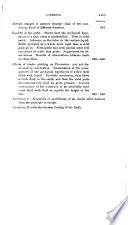 | Christianity - 1882 - 662 pages
...conditions. 3rd. Commencement or change of motion is proportional to the disturbing force, less the resisting force ; and takes place in the direction of the straight line in which the two forces act and react. I commenced this brief article by disclaiming all interest in the merely... | |
 | Daniel Pereira Gardner - Agriculture - 1846 - 898 pages
...2. Every change of motion produced by any external force is proportional to the force impressed, and in the direction of the straight line in which the force acts. "3. Action and reaction are equal, and in contrary directions ; that is, equal and contrary changes... | |
 | Thomas Antisell - Industrial arts - 1852 - 728 pages
...2. Every change of motion produced by any external force is proportions! to the force hnpressed, and in the direction of the straight line in which the force acts. 8. Action and reaction are equal and in contrary directions ; that is, equal and contrary changes of... | |
 | G.P. Putnam & Co - 1852 - 728 pages
...2. Every change of motion produced by any external force is proportional to the force impressed, and in the direction of the straight line in which the force acts. 3. Action and reaction are equal and in contrary directions ; that is, equal and contrary changes of... | |
 | Edward Hughes - 1853 - 766 pages
...(2.) Every change of motion produced by any external force is proportional to the force impressed, and in the direction of the straight line in which the force acts. (3.) Action and reaction are equal and in contrary directions ; that is, equal and contrary changes... | |
 | 1861 - 804 pages
...2. Every change of motion produced by any external force is proportional to the force impressed, and in the direction of the straight line in which the force acts. 3. Action and reaction are equal and in contrary directions ; that is, equal and contrary changes of... | |
 | Peter Guthrie Tait - 1865 - 394 pages
...the grandest phenomena we can conceive. 60. LAW II. Change of motion is proportional to the impressed force, and takes place in the direction of the straight line in which the force acts. We have considered change of velocity, or acceleration, as a purely geometrical quantity, and have... | |
 | Isaac Todhunter - Mechanics - 1867 - 372 pages
...parabola. It is necessary at this stage to introduce the Second Law of Motion. 45. Second Law of Motion. Change of motion is proportional to the acting force,...direction of the straight line in which the force acts. So long as we keep to the same force and the same body change of motion is measured by change of velocity;... | |
 | William Thomson Baron Kelvin, Peter Guthrie Tait - Calculators - 1867 - 914 pages
...rw i//n imprimitur. Change of motion is proportional to the imvrt'.wd fu/rc, and 1 1 , second law. takes place in the direction of the straight line in which the force <'<-(&. 252. If any force generates motion, a double force will generate double motion, and so on,... | |
 | Class-book - 1868 - 330 pages
...of Motion, which is "That every change of motion is proportional to the force producing the change, and takes place in the direction of the straight line in which the force acts." 12. Q. How is it that a half-open- door, which a slight touch Kould disturb, may be pierced with a... | |
| |